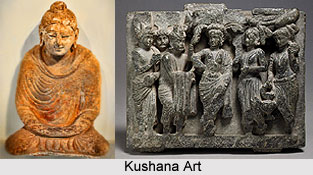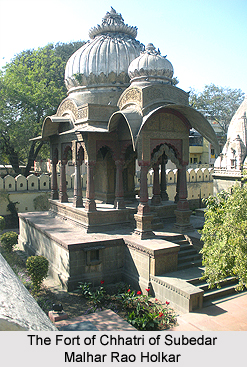 History of Bhind District tells that the United State of Madhya Bharat was formally inaugurated on 28th of May, 1948 at Gwalior State. Later, it was decided to divide the Union into six districts and Bhind was one among them. As a result of reorganisation of states on the formation of Madhya Pradesh in November, 1956, Bhind District became a part of newly formed state of Madhya Pradesh. Further, according to the history of Bhind District, during the time of Bharata war the entire region between valleys of Yamuna and the Vindhyas.
History of Bhind District tells that the United State of Madhya Bharat was formally inaugurated on 28th of May, 1948 at Gwalior State. Later, it was decided to divide the Union into six districts and Bhind was one among them. As a result of reorganisation of states on the formation of Madhya Pradesh in November, 1956, Bhind District became a part of newly formed state of Madhya Pradesh. Further, according to the history of Bhind District, during the time of Bharata war the entire region between valleys of Yamuna and the Vindhyas.
According to the Puranic tradition, Manu`s grandson Pururavas Aila, founder of lunar race, extended his sway into the Gangetic doab. Malwa and Eastern Rajputana, covering most probably Bhind district also. His great grandson King Yayati is said to have reduced the whole of Madhyadesha and the surrounding region. After him, his son Yadu became a mornarch of the territory that was watered by Chambal River, Betwa River and the Ken River. The Yadus were supplanted by the Haihayas, who were again annihilated by the Yadus of Vidarbha. Kanishka became the king of this region. Thus, Bhind District evidently lying in the area came under Aryan fold.
In the 4th Century AD, the whole of Aryavarta was incorporated in the vast empire of the Nandas. According to the Puranic evidences, Mahapadmananda the founder of Nanda Dynasty was the destroyer of all the Kshatrapas and the sole monarch of the earth. The distributions of the inscriptions of Ashoka inscriptions indicate that in the 3rd Century BC he was the master of a vast empire, embracing the whole of India excepting the four states of extreme south, Ashokan inscription at Gujar (in the adjacent Datia district) testifies the close association of the Mauryan emperor with this region.
 In the first century AD the Gwalior region was under the rule of earlier Nagas. Padmavati, city in the Vindhya Hills (in Gwalior District), Mathura and Kantipuri (Morena District) were the headquarters of the three branches of the Naga rulers. Later the Kushanas supplanted the Nagas. Kanishka was the greatest of the Kushana emperors, His Empire extended over Madhyadesha, Uttarapatha and Aparanta regions of ancient India stretching from Bihar in the east to Khorasan in the west and from Khotan in the north to Konkan in the south. Bhind District thus, was included in the Kushana Empire. The downfall of Kushana Empire was complete in this area after the reign of Vasudeva. Their place was taken up again by the Nagas, who remained politically prominent in this area during the 3rd and 4th centuries AD,took up their place again.
In the first century AD the Gwalior region was under the rule of earlier Nagas. Padmavati, city in the Vindhya Hills (in Gwalior District), Mathura and Kantipuri (Morena District) were the headquarters of the three branches of the Naga rulers. Later the Kushanas supplanted the Nagas. Kanishka was the greatest of the Kushana emperors, His Empire extended over Madhyadesha, Uttarapatha and Aparanta regions of ancient India stretching from Bihar in the east to Khorasan in the west and from Khotan in the north to Konkan in the south. Bhind District thus, was included in the Kushana Empire. The downfall of Kushana Empire was complete in this area after the reign of Vasudeva. Their place was taken up again by the Nagas, who remained politically prominent in this area during the 3rd and 4th centuries AD,took up their place again.
In the middle of the 4th century AD the Naga territory passed under the Gupta sovereignty. During the reign of Bhanugupta (AD 495 - AD 510), or shortly before his accession, invasion of the Huns leader Toramana hastened the dissolution of the Gupta empire. The Huns Empire included the territories from Punjab to Central India; even brought Magadh, Kaushambi District and Kashi under their sphere of influence. As per history of Bhind District, in the beginning of the 7th century AD, Harshavardhan ascended the throne of Thaneshwar and became the king of Kannauj. During this dynasty Jainism flourished in the region.
By the second quarter of the 8th century AD, this region along with Malwa came under the dynastic rule of a branch of the Gurjara Prathiharas. Moreover, Vajradaman conquered Gwalior fort for Dhanga about 977 AD. After that his dynasty ruled over Gwalior region till the earlier part of the 12th Century AD.
History of Bhind District also mentions about the Sultanate period. This region then passed under the Delhi Sultanate. In the year 1195 - 1196 Muhammad Ghori attacked Sallakshanapala, the Pratihara chief of Gwalior Sallakshana accepted Ghori`s suzerainty and was therefore allowed to rule his territory.
This region later came under the sway of the Sur Dynasty. The District of Bhind formed most part of the Sarkar of Agra in the Subah of Agra. The district comprised mainly the Mahal of Hatkant which had a brick fort. The Mughal rule continued till the beginning of 18th Century AD. The town of Gohad, which is now part of Bhind district, was founded by a Jat family. The tract around this town was captured by the Jat family in the latter part of the 17th Century AD. In about 1736 AD, the Maratha army led by Baji Rao I, attacked the Raja of Bhadawar, and after putting him to flight, devastated his territory. Again in 1737, Malhar Rao Holkar attacked the territory of the Raja of Bhadawar and besieged his stronghold.
History of Bhind District also includes the post Mughal dynasty period. From this period, the history of Bhind District coincides with that of Gwalior tract. Daulat Rao Scindia died in 1827 and was succeeded by Mugat Rao alia Jankoji Rao, a minor on adoption. He was succeeded by Jayaji Rao. After the revolt in 1857, Gwalior was attacked by the combined forces of Lakshmi Bai, Rao Saheb and Tatya Tope in 1858. The British then stormed the Gwalior fort and took it under their control on June 18, 1858. It was passed over to the Scindia in March 1886. The Gwalior Light railway from Gwalior to Bhind was constructed in 1897 and was started in 1899. After the independence of the country, United State of Madhya Bharat was formally inaugurated by Jawaharlal Nehru in the year 1948 at Gwalior.






